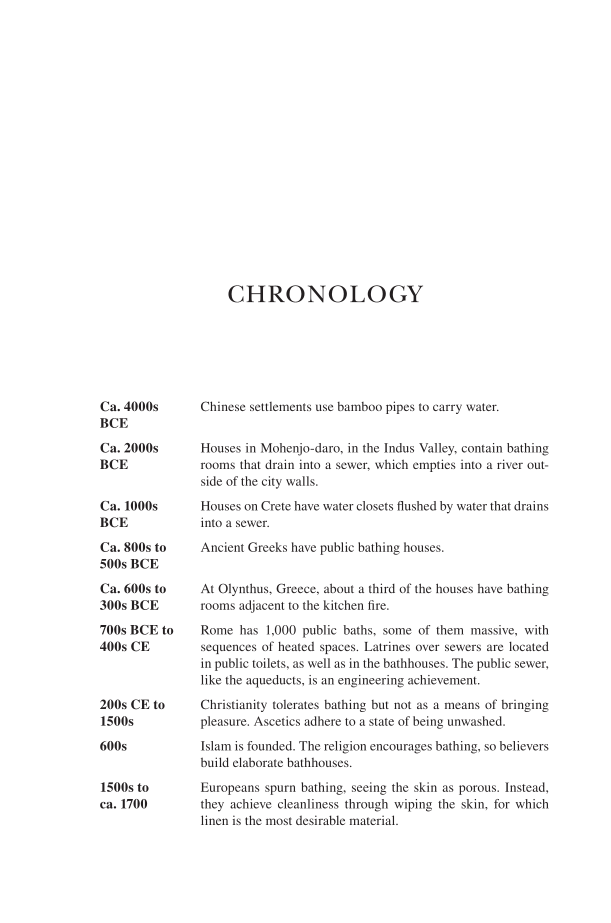CHRONOLOGY Ca. 4000s BCE Chinese settlements use bamboo pipes to carry water. Ca. 2000s BCE Houses in Mohenjo-daro, in the Indus Valley, contain bathing rooms that drain into a sewer, which empties into a river out- side of the city walls. Ca. 1000s BCE Houses on Crete have water closets flushed by water that drains into a sewer. Ca. 800s to 500s BCE Ancient Greeks have public bathing houses. Ca. 600s to 300s BCE At Olynthus, Greece, about a third of the houses have bathing rooms adjacent to the kitchen fire. 700s BCE to 400s CE Rome has 1,000 public baths, some of them massive, with sequences of heated spaces. Latrines over sewers are located in public toilets, as well as in the bathhouses. The public sewer, like the aqueducts, is an engineering achievement. 200s CE to 1500s Christianity tolerates bathing but not as a means of bringing pleasure. Ascetics adhere to a state of being unwashed. 600s Islam is founded. The religion encourages bathing, so believers build elaborate bathhouses. 1500s to ca. 1700 Europeans spurn bathing, seeing the skin as porous. Instead, they achieve cleanliness through wiping the skin, for which linen is the most desirable material.
Document Details My Account Print multiple pages
Print
You have printed 0 times in the last 24 hours.
Your print count will reset on at .
You may print 0 more time(s) before then.
You may print a maximum of 0 pages at a time.




















































































































































































































